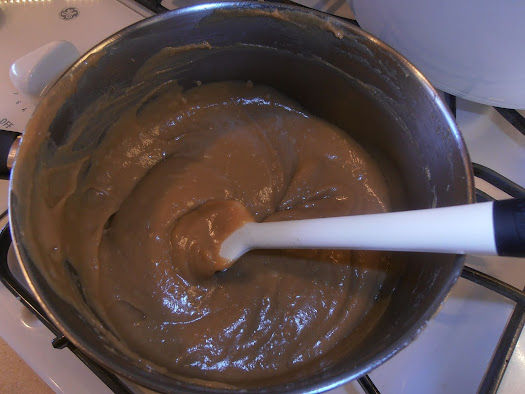I laughed when I realized my last six posts were all about desserts or sort-of-desserts. My sweet tooth obviously took control of my decision-making process! So I went on a search for something more savory to prepare.
I'm still exploring The Best of Shaker Cooking by Amy Bess Miller and Persis Fuller. With over 900 recipes, you can understand why it takes time to peruse. There are so many temptations! I found a recipe for lamb shanks I would love to make; it is almost time to find lamb shanks in the stores. Fingers are crossed.
 |
| ISBN 0-02-584980-8 |
The recipe specifically labeled as "pie" is basically sliced tomatoes bound together with a mixture of sugar, cream, egg, and nutmeg, and placed between two crusts.
The recipe I tried is called a pudding. It is a cooked filling on top of buttered crumbs and topped with a crust. They offer a second pudding recipe that is similar, using bread cubes on the bottom, crumbs on the top, and the filling has more herbs. I chose the simpler one to see what the filling is like without all the extras. Besides, it is fun to make pie crust.
The recipe source is credited to the Hancock Shaker Village. Click here to visit their website.
Tomato Pudding (page 158)
4 cups canned tomatoes cooked down to 2 cups
1 cup light brown sugar
1 tablespoon grated onion
1/2 teaspoon salt
1/4 teaspoon pepper
1 cup bread crumbs
1/2 cup melted butter
1 pastry lid for 8 inch pie plate
Combine first 5 ingredients and bring to a boil. Simmer to thicken.
In an 8-inch pie dish put bread crumbs, cover with butter, top with tomato mixture, and cover with pastry crust. Bake in 350 degree F oven for 30 minutes. Watch to see that bottom doesn't burn (use tip of knife to lift up crust). Tomatoes burn easily. Serves 4 - 6.
My Notes
First I made the pie crust dough and let it rest in the refrigerator while I did everything else.
The three cans of diced tomatoes yielded 43.5 ounces instead of the 4 cups = 32 ounces asked for in the recipe. I decided to use it all and reduce to about half.
Being cautious about burning the tomatoes while reducing them, I keep the heat on very low for a long time. This wasn't really reducing the quantity, so I turned the heat up after a few hours but watched it carefully and stirred it to make sure nothing was sticking on the bottom.
When it reduced to just under 3 cups (not quite half), I decided it was time to add the other flavors. I adjusted their measures up a little to match the greater tomato quantity. (Not the sugar.)
To be honest, I was surprised at the amount of sugar listed in the recipe. (Not that I was complaining, and still not a dessert!) I wondered if it could be lowered and still taste good.
I also started preheating the oven at this point.
The instructions said to bring to a boil and simmer to thicken, so I put it on medium heat until it started to boil and then put it down to low to just a bare simmer. I decided that "to thicken" meant to dissolve the sugar and to give the flavors a chance to infuse. I wasn't sure it would thicken up much more.
It actually did thicken a little more (or was it my imagination?) and it tasted good. I liked the hint of pepper. It was a bit sweeter than I expected for a savory recipe.
The bread crumbs made a thick base in the pie pan.
There were no directions to mix the crumbs and the melted butter, just to cover the crumbs. So I did! I just poured the butter over the crumbs.
And then I poured the filling over it all.
 |
| Leaving an allowance for a decorative edge. |

















